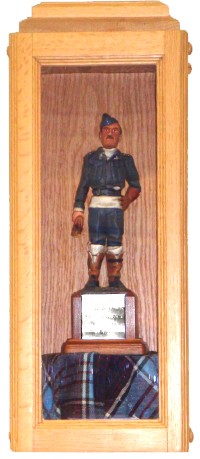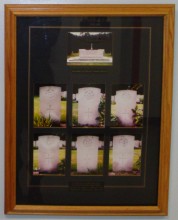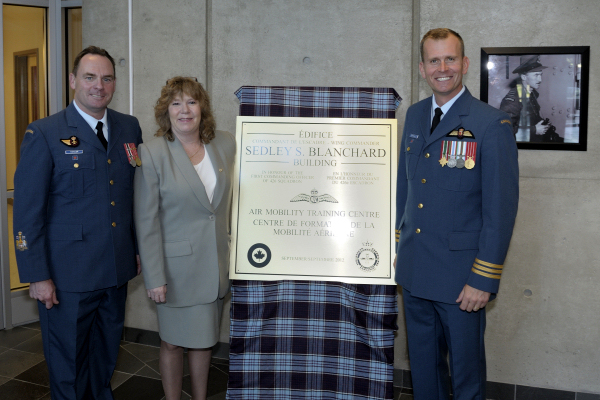No 426 Squadron, first Commanding Officer
Wing Commander Sedley Stewart Blanchard
| S.S. Blanchard was born in Brandon, Manitoba, on 18 Mar 11, completed high school at St. John's College, Winnipeg, in 28 and, after moving with his family to Medicine Hat, Alberta, entered the Royal Military College at Kingston in 29. He completed the general engineering program and in 33 was commissioned as a Lieutenant in Lord Strathcona's Horse. In 34 he resigned his army commission and joined the RCAF as a Pilot Officer. After earning his pilot's badge at Camp Borden on 28 May 35, Blanchard served five years at various RCAF establishments, notably Ottawa, Winnipeg and Dartmouth. Promoted Wing Commander on 1 Apr 41, Blanchard commanded No 8 (Bomber Reconnaissance) Squadron at Dartmouth for a short time, until posted overseas. He flew to Britain with Ferry Command, landing on 9 Aug 42, and, after training on Wellingtons at No 22 OTU at Wellesbourne Mountford, he arrived at RAF Station Dishforth on 21 Oct 42 to take command of No 426 Squadron. As the squadron was forming and getting into shape for operations, initiatives were taken to develop a unit badge and motto. It was Blanchard who suggested 'Thunderbird Squadron' and assigned the Adjutant, F/L Connor, to make this happen. Blanchard also rationalized the squadron organization on the 'garage scheme', consolidating maintenance personnel in what he called M Flight, under the Engineering Officer, and aircrew in A and B Flights. It is believed that No 426 was the first squadron in No 4 Group (if not Bomber Command) to adopt the garage scheme that was eventually accepted by most units. |
|
The squadron ready for operations in just twelve weeks, flying its first operational flight 14 Jan 43. Blanchard led the mission, a bombing raid on Lorient, a major U-boat base on the Bay of Biscay. On 21 Jan 43 he led a mining operation in the North Sea off the Frisian Islands and on 26 and 27 Jan 43 raids on Lorient. On 3 Feb 43 Blanchard and his crew had to turn back from an attack on Hamburg due to poor aircraft performance, but on 4 Feb 43 he led another raid on Lorient, and again on 7 Feb 43. Then, on 14 Feb 43, while on an attack on Cologne which included 243 aircraft, Wellington X3420/OW "H" piloted by Wing Commander Blanchard, failed to return. On the homeward leg, it was attacked by an Me 110, and crashed into a small wooded area at Beegden Heel. The German authorities recovered the bodies and they were buried in the Jonkerbos War Cemetery at Nijmegen, Holland. The crew included; navigator P/O P.W. Jeanneret (Victoria, BC), bomb aimer Sgt P.M. Corley (South Norwood, Surrey), wireless operator Sgt A.G. Longwell (Foxboro, ON), rear gunner F/S J.H. Eveline (Sudbury, ON), and second pilot Sgt K.W. Tutton (Toronto, ON). Blanchard was sorely missed by the squadron he had so handily formed, and was, and is, remembered as a leader who cared deeply about his men, always led by example, and from the front. He is commemorated by the "Wing Commander Sedley S. Blanchard Building, Air Mobility Training Centre" which was officially opened on 13 Sep 2012. The main display case in the front foyer features a W/C's tunic with Blanchard's medals, a unit Mentioned in Despatches, his RMC sweater, athletic awards, a presentation silver salver, briefcase, photos, a statuette of the intrepid airman, memoriams, and other memorabilia. Most of the artefacts were graciously donated by the Schuhart family. | ||
CWO P. Taylor, Ms T. Schuhart (Blanchard's granddaughter), and LCol D. Perrault unveil the Blanchard Building plaque. | ||
| ||



















































